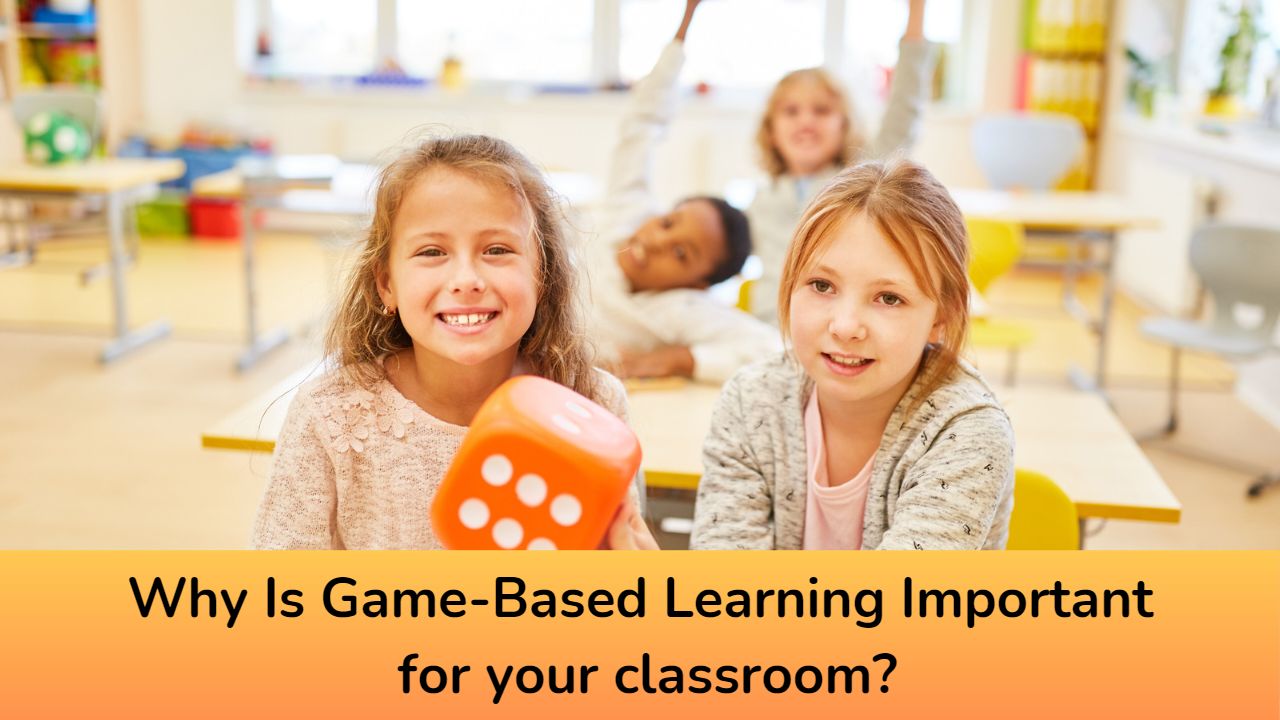In recent years, game-based learning has been widely recognized as an effective and engaging approach to education. Combining play and learning elements, game-based learning is a powerful tool for increasing student participation, enhancing knowledge retention, and developing critical thinking skills. In this post we will explores the concept of game-based learning, examines its benefits, highlights different types of game-based learning, and provides best practices for implementing them in your classroom
What is Game-Based Learning?
Game-based learning refers to the integration of educational content within a game-like environment. It leverages the inherent engagement and motivation that games offer to create a dynamic learning experience. It often involves challenges, rewards, and interactive elements that promote active participation and learning.
Points systems, badges, leaderboards, discussion boards, quizzes, and classroom response systems are all components of game-based learning. Points may be accompanied by academic benefits such as an extra week to submit an assignment after reaching a certain point threshold.
Earlier, there was a misconception that online gaming is detrimental to the development of children. However, that is not the case. There are many benefits of Game based learning in modern education system. One of the most significant benefits associated with it is the development of active learning among children.
How does game-based learning engage students?
Game-based learning engages students by tapping into their natural desire to play and compete. Games provide a sense of challenge and achievement that can motivate students to learn and succeed. They also offer immediate feedback, allowing students to see the results of their actions and adjust their strategies accordingly. Additionally, games can be customized to meet the needs and interests of individual students, making learning more personalized and relevant. Overall, game-based learning offers a fun and effective way to engage students and enhance their learning experience.
Benefits of Game-Based Learning:
Here are few key benefits of Game based learning:
- Increased Engagement: Games can capture learners’ attention and keep them interested for a long time. This commitment leads to higher levels of motivation and active participation in the learning process.
- Enhanced Retention: Game-based learning stimulates multiple senses and promotes experiential learning. Through interactive gameplay and immediate feedback, learners can reinforce their knowledge and retain information more effectively.
- Active Learning: Games encourage learners to make decisions, solve problems, and apply critical thinking skills. They provide a safe, interactive environment to explore, experiment, and learn from mistakes, thereby fostering a deeper understanding of the subject matter.
- Personalized Learning: Game-based learning enables customization to meet the unique needs of learners. The use of adaptive algorithms and branching scenarios allows learners to progress at their own pace and receive personalized feedback, ensuring a customized learning experience.
How can game-based learning be incorporated into the classroom?
Game-based learning can be incorporated into the classroom in a variety of ways. Teachers can use educational games as a supplement to traditional teaching methods, or they can create their own games that align with their curriculum. Games can be played individually or in groups, and can be used as a form of assessment or review.
Additionally, technology can be used to enhance game-based learning, such as through the use of interactive whiteboards or tablets. The possibilities are endless, and game-based learning can be tailored to fit the needs and preferences of each individual classroom.
Best Practices for Implementing Game-Based Learning:
- Clearly define learning objectives: Align the game-based learning experience with specific educational goals to ensure that the gameplay supports the desired learning outcomes.
- Incorporate meaningful challenges: Design games that offer meaningful challenges, requiring learners to apply their knowledge and skills in problem-solving scenarios.
- Provide immediate feedback: Offer instant feedback to players, highlighting both correct and incorrect responses. This allows learners to understand their mistakes, make adjustments, and improve their performance.
- Balance fun and learning: Strive for a balance between entertainment and educational content. The game should be engaging and enjoyable while effectively delivering the intended learning outcomes.
- Foster collaboration and competition: Incorporate multiplayer or cooperative elements to encourage collaboration among learners. Additionally, integrating leaderboards or achievements can spark healthy competition and motivation.
- Regularly assess progress: Monitor and track learner progress throughout the game-based learning experience. This data can provide valuable insights into areas of improvement and allow for personalized interventions.
What are some examples of successful game-based learning programs?
There are many successful game-based learning programs being used in classrooms around the world. One example is Minecraft: Education Edition, which allows students to explore and learn in a virtual world. Another example is Kahoot!, a game-based learning platform that allows teachers to create quizzes and games for their students. Prodigy Math Game is another popular game-based learning program that helps students improve their math skills through interactive gameplay. These programs have been shown to increase student engagement and motivation, leading to better learning outcomes.
Are you still using the game based learning in your online classroom? If not, please share your views in the comments section below. If you are already using it, then please share the advantages you noticed while using it in your classroom.
For regular updates about Moodle, eLearning and edtech industry, please visit us regularly at https://lmsdaily.com. You can also like us on Facebook or follow us on Twitter, or Subscribe our YouTube Channel.



